Back to Oboyski Home Page
.............................
Back to Hawaiian Islands

The island of Nihoa is southeast most, youngest, and most pristine of the Northwest
Hawaiian Islands. This small island is ~1 mile
across and 900 feet at its highest point (Miller's peak). Access is by invitation
only in order to protect the many nesting sea birds and
unique endemic fauna and flora. I had the opportunity to visit Nihoa in August
2005 for 7 days to survey for arthropods.
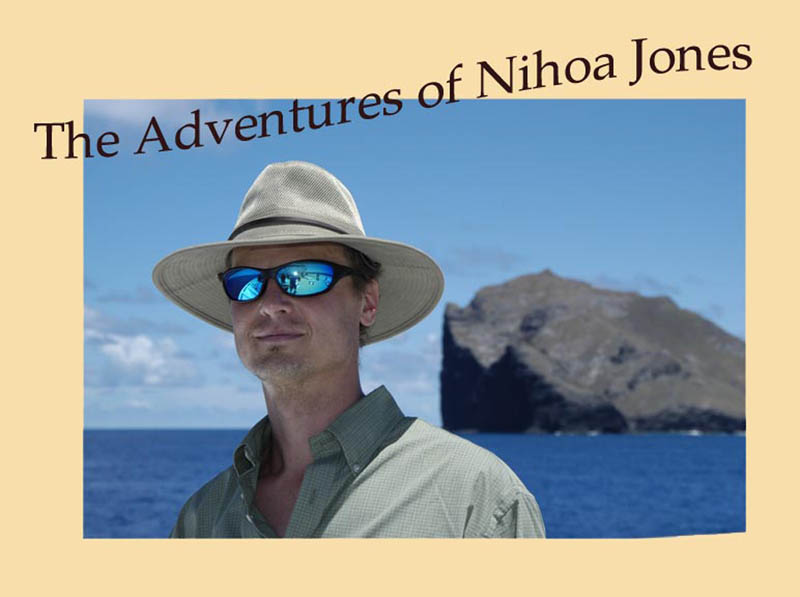
All clothing and other "soft" gear must be purchased new. All other
gear must be frozen before arriving at the island.
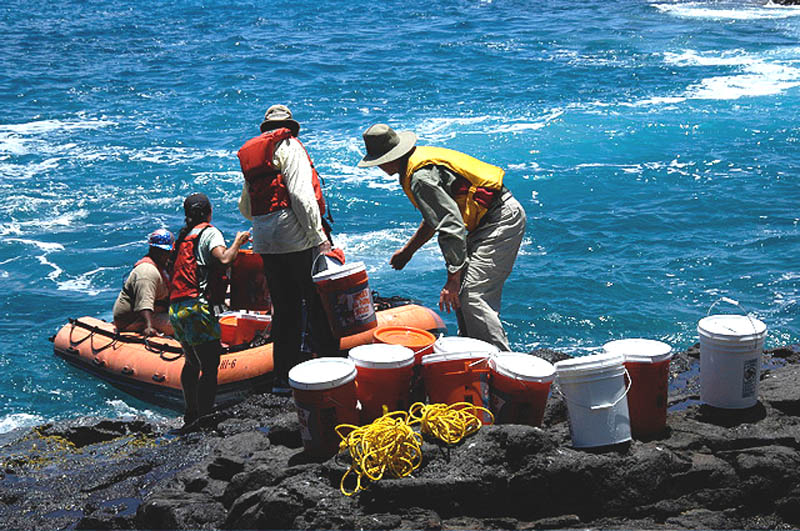
There is no fresh water avialable on the island. All food (no fresh produce),
water, and gear travels in water-tight buckets.

Most of the island is very rugged and steep, covered mostly by Sida fallax,
Chenopodium oahuensis, Sesbania tomentosa shrubs
and Eragrostis grass. Despite it being the "dry season," much
of the vegetation was very lush.

View of the southern end of Nihoa from the north.
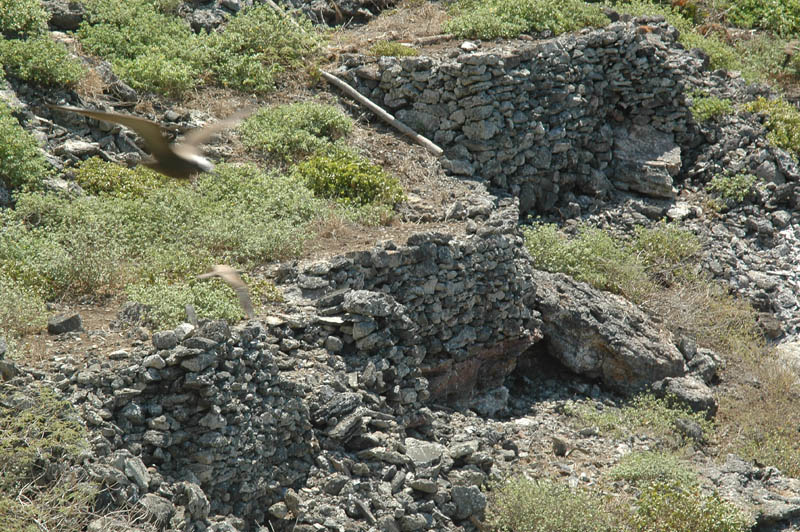
Nihoa was once home to a sustainable population of Hawaiians.
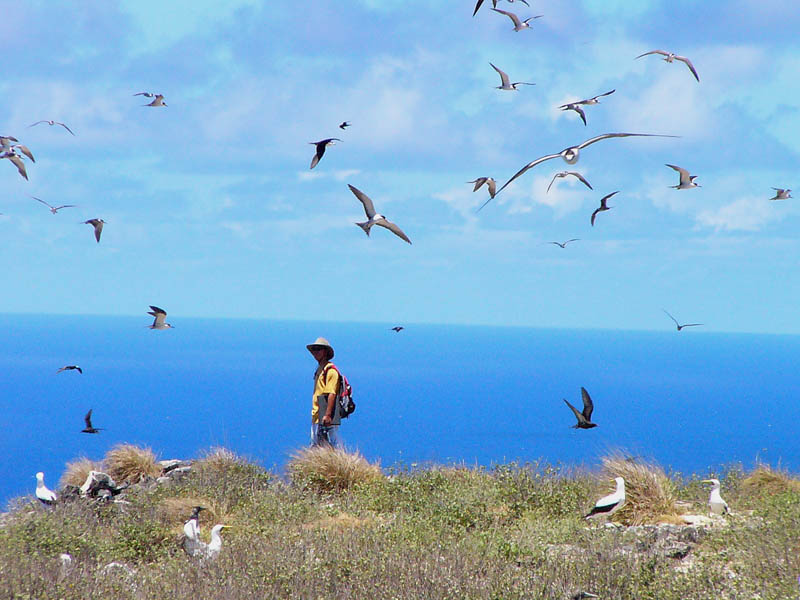
Without rats, cats, mongooses, mice or any other alien mammals, sea birds abound.
(photo by Kehaulani Souza)
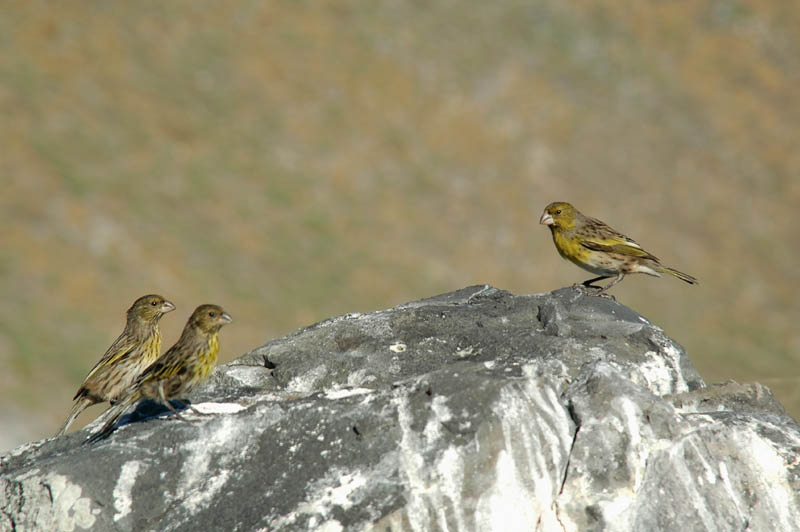
The Nihoa finch, endemic only to Nihoa, preys on insects, seeds, and the eggs
of other birds.
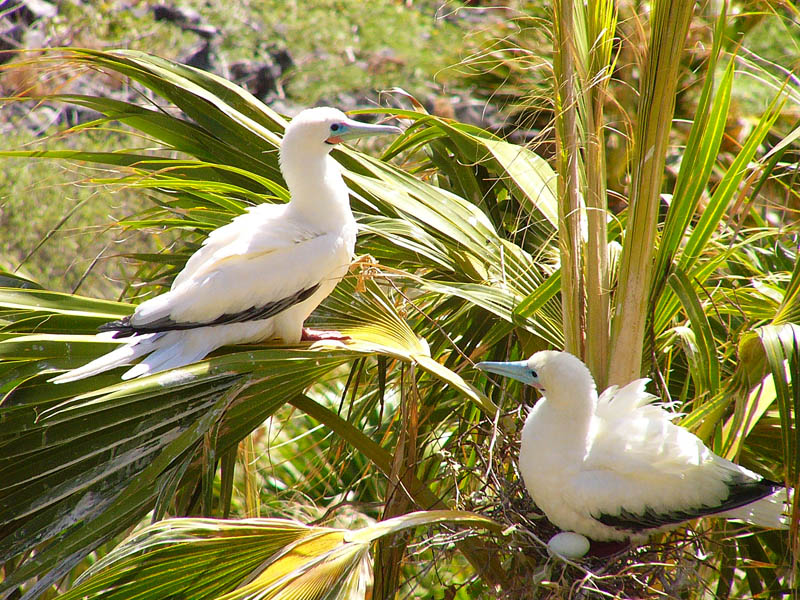
Boobies nest on Pritchardia remota branches.

Great frigate bird chicks.
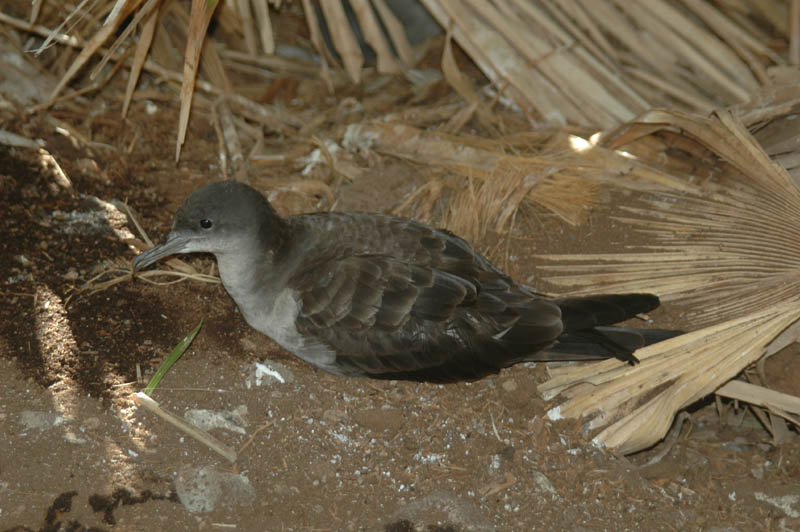
Wedge-tailed shearwaters nest in the soft soils below Pritchardia palms.
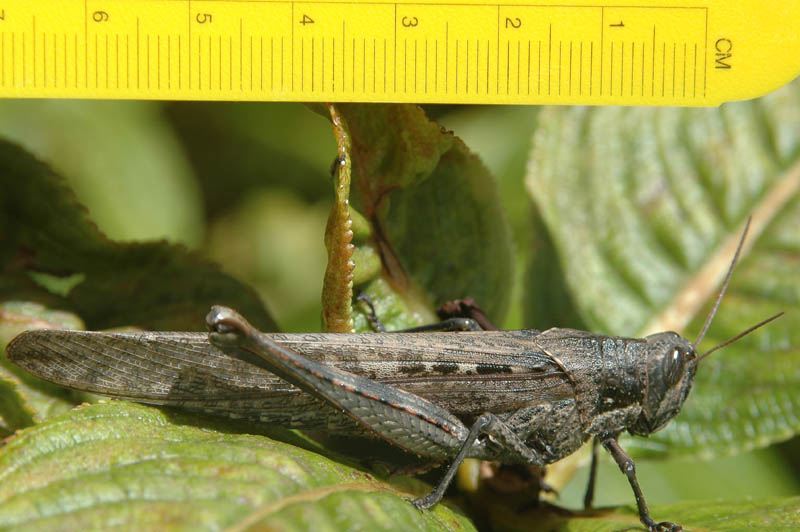
Schistocerca nitens, an alien grasshopper in the Hawaiian Islands, reached
outbreak densities in 2002 & 2004, denuding most of the
vegetation across the island. In 2005 the grasshoppers were rare and the vegetation
was lush. This specimen was photographed on
Oahu on a Broussasia shrub. Although the plants and birds are all native
on Nihoa, the insect and spider fauna is not quite as intact.
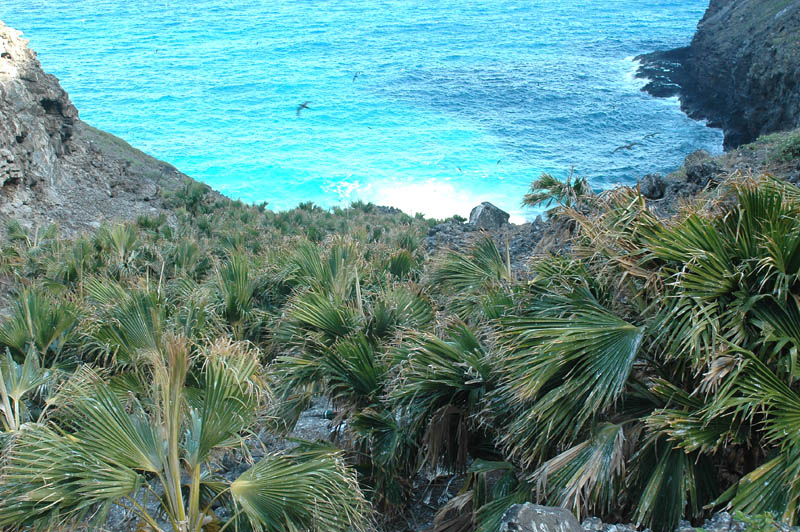
Pritchardia remota forests occupy the East and West Palm Valleys on
the island where fresh water seeps keep the soil moist year-
round. Pritchardia are extremely rare on other Hawaiian Islands due
largely to seed predation by rats.
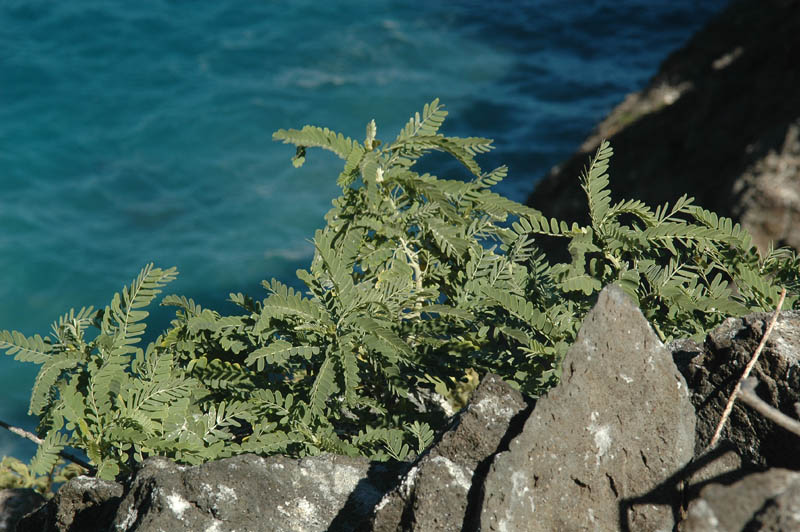
Sesbania tomentosa is also very rare on other islands, but on Nihoa
it forms part of the shrubland matrix.

Hawaiian monk seals are almost always to be found sunning along the rocky coast
and the one sandy beach on the island.














